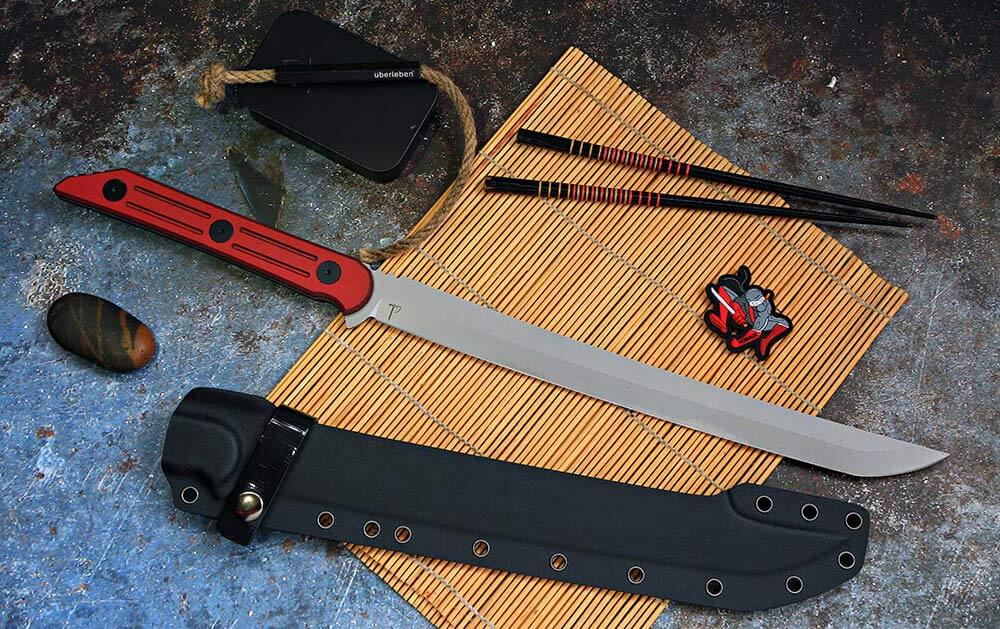BRINGING THE ESSENCE OF THE JAPANESE WAKIZASHI SWORD TO THE BUSH
Jake Hoback designed a folding knife several years ago called the Kwaiback MK4, which served as the blueprint for the Kwaichete. Jake wanted a longer fixed-blade version with the essence of the Kwaiback MK4 that could serve as a machete disguised as a short sword—thus, the Kwaichete was born.
JAKE HOBACK KNIVES
I met Jake Hoback several years ago during a trade show and soon after became acquainted with his work. Although he was initially self-taught, Jake has been on a long road of learning techniques and skills from other knife makers through the years. His interest in knives started at the age of five. It erupted into full-on knife addiction after seeing the movie “Rambo.” I can relate to that; Rambo seemed to get many of us into this industry and those reading this interested in the outdoors.
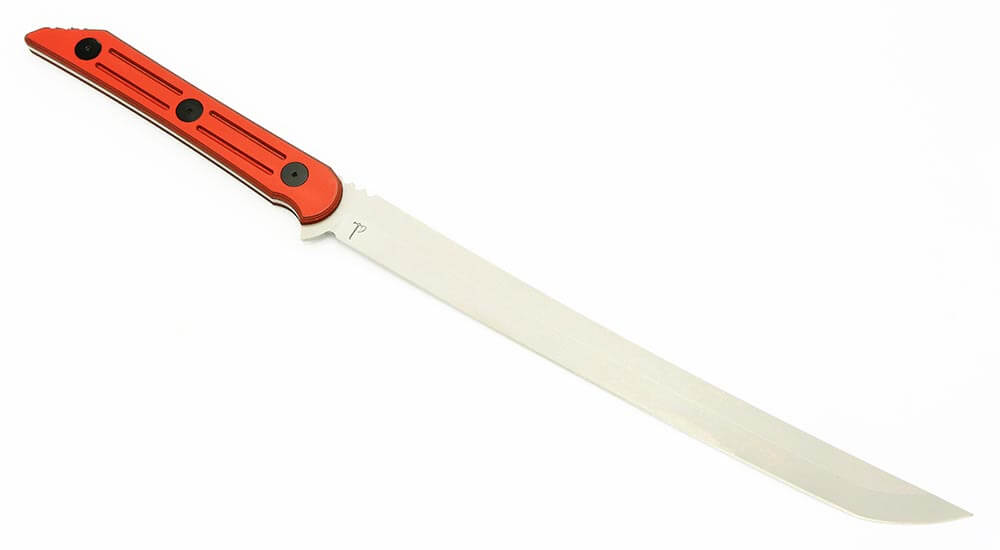
Like Jake, I, too, was a kid of the ’80s, drawn in by so many movies of that era encouraging wilderness skills, gear, and adventure. It was in the ’90s when Jake started pounding on metal with a framing hammer. He sold his first knife in 2003, and by 2009 he was a full-time maker. Over a decade later, Jake is still designing, engineering, and making hardworking fixed-blade knives, axes, tomahawks, folding knives, and swords.
KWAICHETE
A Japanese wakizashi (waki) is a short utility sword used as a close-quarter weapon and tool in tighter, confined areas. According to various historical accounts, the length of a wakizashi varied. However, for his, Jake settled on 19 inches overall, with a 12-inch 154CM stainless-steel blade. The handle is a whopping 7 inches long (width is ½-inch), suitable for your inner samurai. Ruby Red SureTouch scales give the Kwaichete a utilitarian look and feel. The maximum width is 1 inch with a ⅛-inch thickness, making this tool swift in hand. The whole package is 15 ounces—11.1 ounces for just the sword. A quick-deploying Kydex sheath is included and comes in black.
“The handle is a whopping 7 inches long (width is ½-inch), suitable for your inner Samurai.”
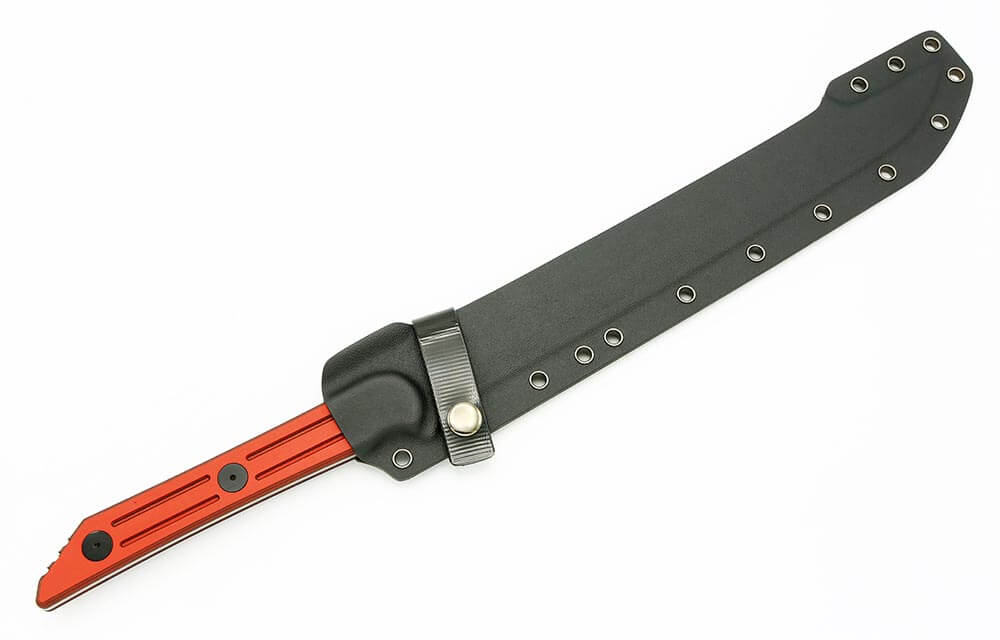
BUSHCRAFT SWORD
Nimble in hand, portable, and whippy, the Kwaichete is a workhorse of a blade in camp or off-trail. This is especially true when the stabby, thorny vines of the Japanese barberry shrub obstruct the path and act as an ankle- and knee-biter. The Kwaichete excels as a trail-brush machete with the added cool factor of a sword, and who doesn’t like a sword?
I came across a large maple bough that had broken off a tree; it was still green and had several parts I needed for making traps and tools. The straighter pieces were about finger-thick and were easily chopped off with a single swing, while the base of the bough, about wrist-thick, was chopped through with the narrow, swift Kwaichete.
It took a few minutes to chop the thicker dry section, but it was a good workout in the 90-degree summer weather. In a matter of minutes, I had outstanding straight, green branches without having to harm any living trees in the process. I bunched the good parts together and dragged them the remaining 50 yards to camp for some crafting and cooking. I love it when a plan comes together.
“The Kwaichete excels as a trail-brush machete with the added cool factor of a sword, and who doesn’t like a sword?”
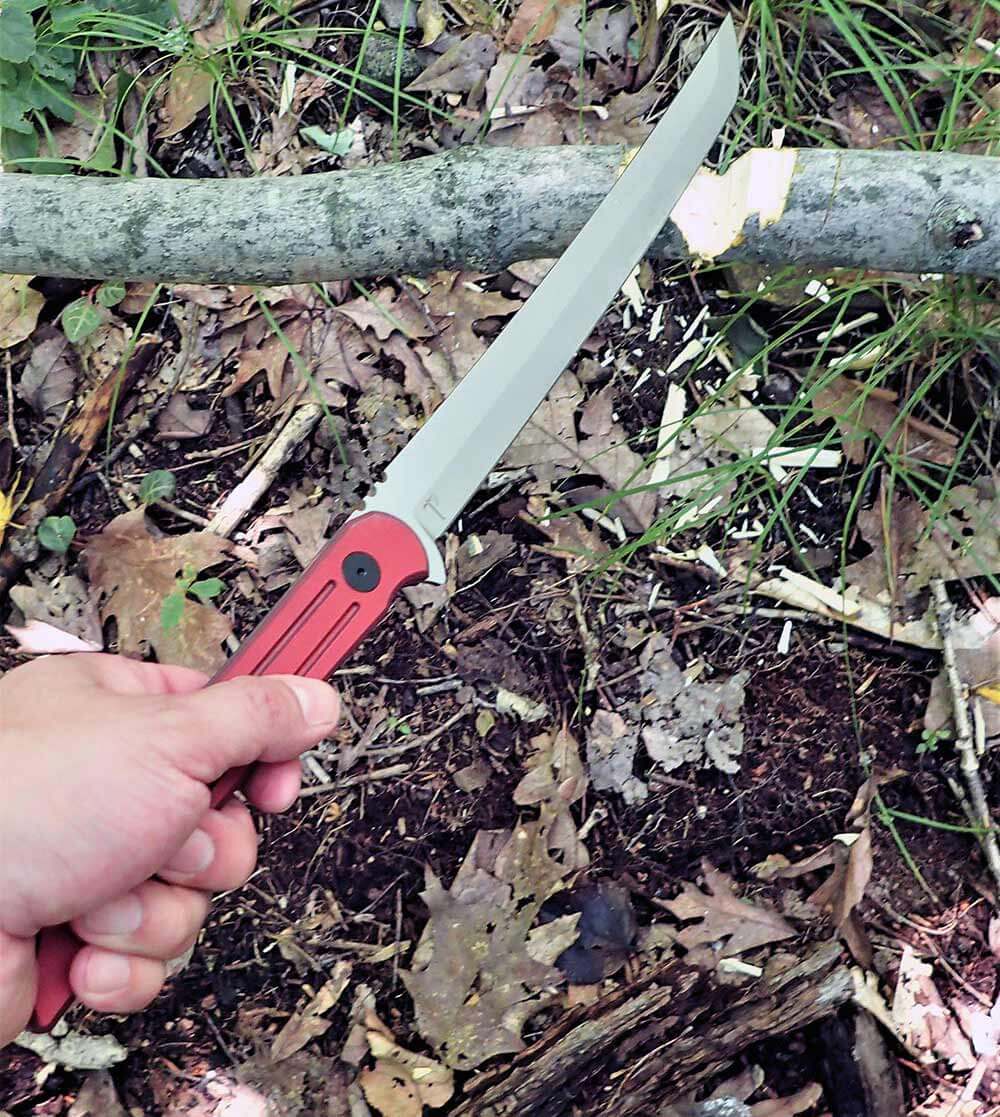
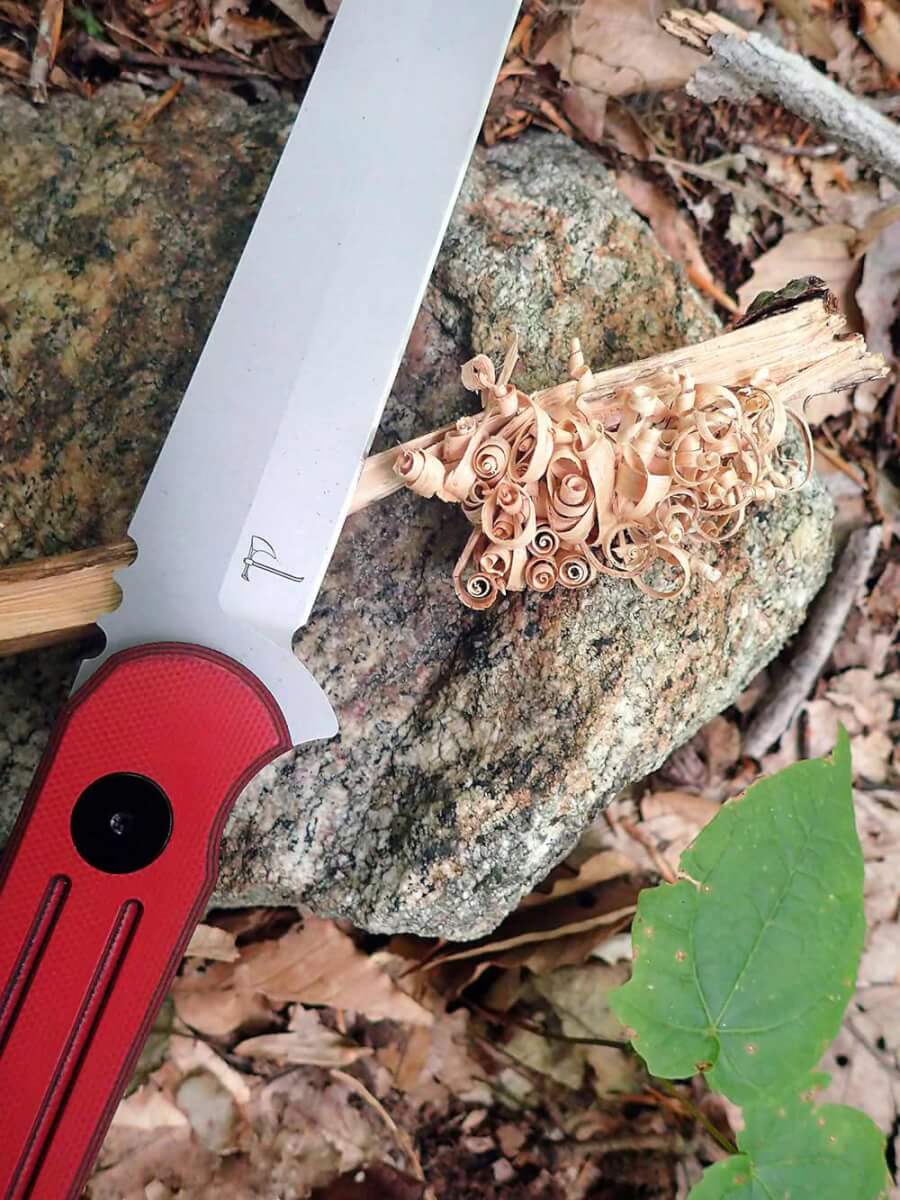
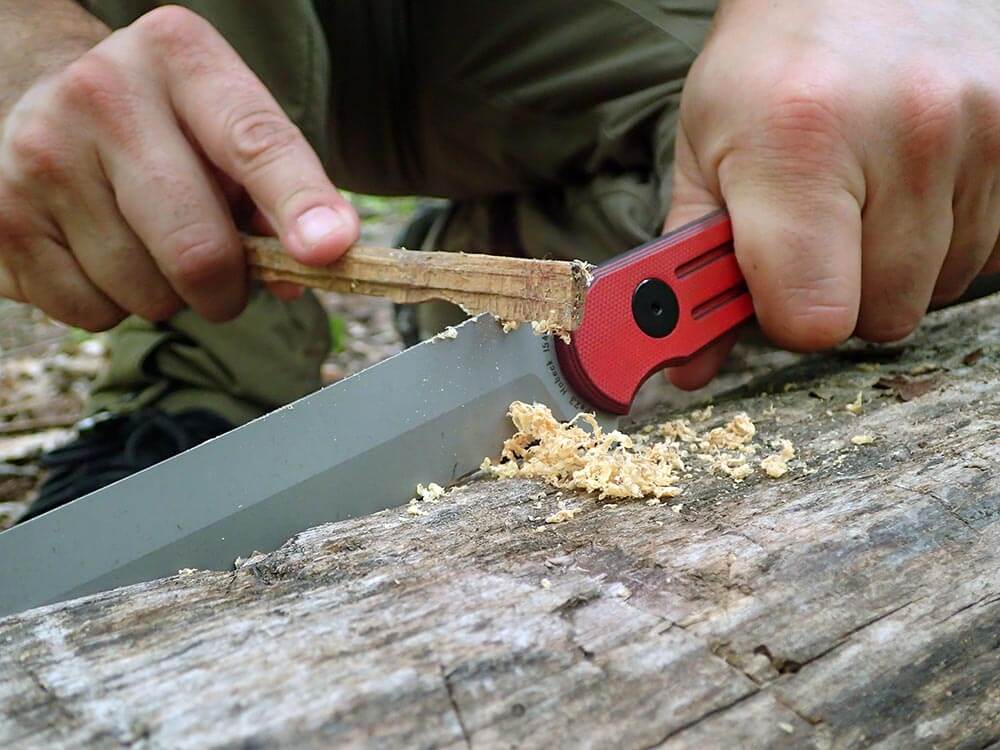
The fire was first, and I quickly noticed how sharp the spine and jimping of the Kwaichete were. A thin ferro rod could fit in between the jimping and be pulled back to produce sparks, which I did until I figured out the spine was equally sharp. I used a small fatwood stick to scrape against the jimping area, which fit perfectly, and I got a small pile of shavings.
To ignite the fatwood, I held the sword by the handle, blade facing down directly next to the shavings. My free hand gripped the ferro rod with my index finger on the rod and scraped the top of the spine, showering the fatwood with sparks. Luckily, the blade is narrow at 1 inch wide, allowing the sparks to easily land on the shavings and ignite.
So much about bushcraft cooking is about having the proper sword. Food can easily be sliced with a knife, but without accruing many style points, unlike when using a sword. Fire and food preparation was on my list for this hot summer’s day. When the temperature hits 90, I try to make camp food that cooks fast, so I’m not roasting over hot coals and flames—only the food is.
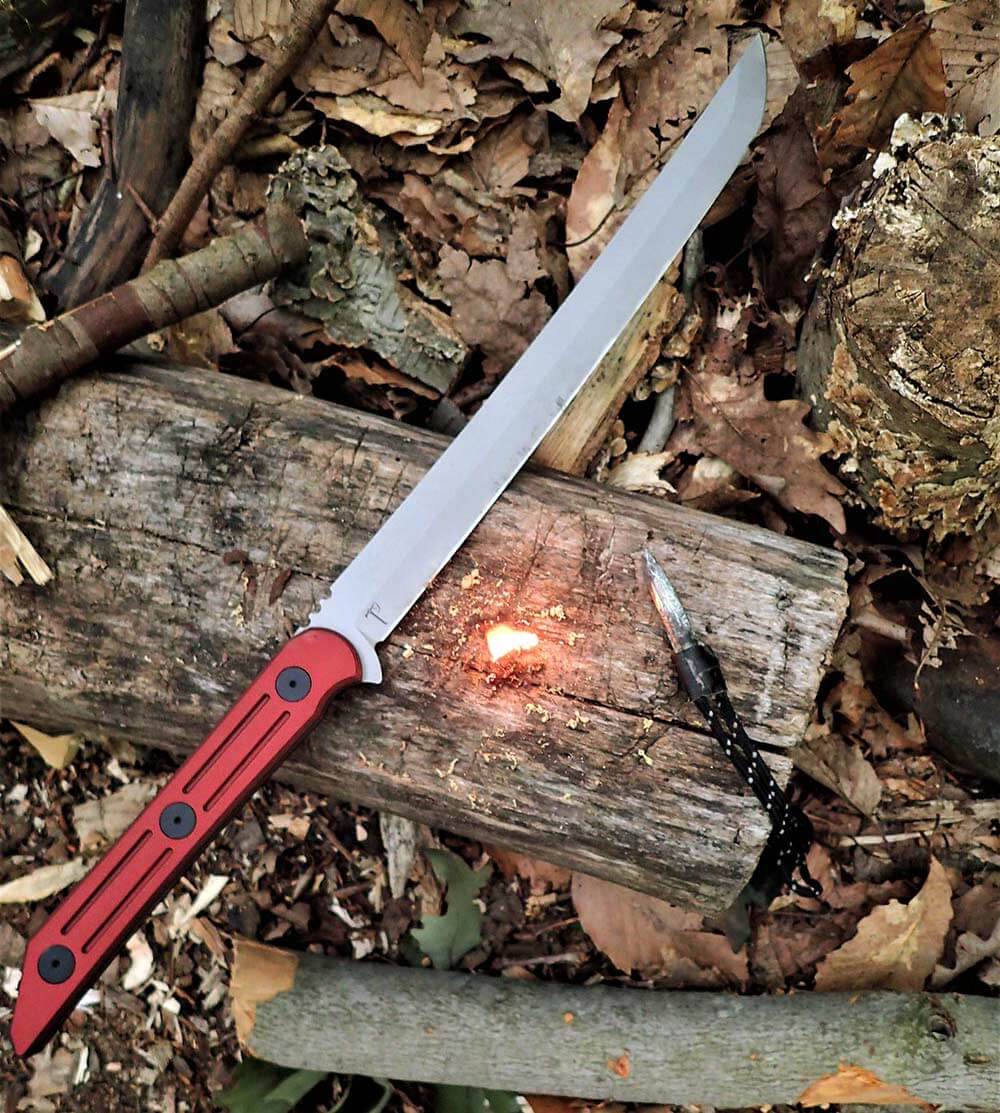
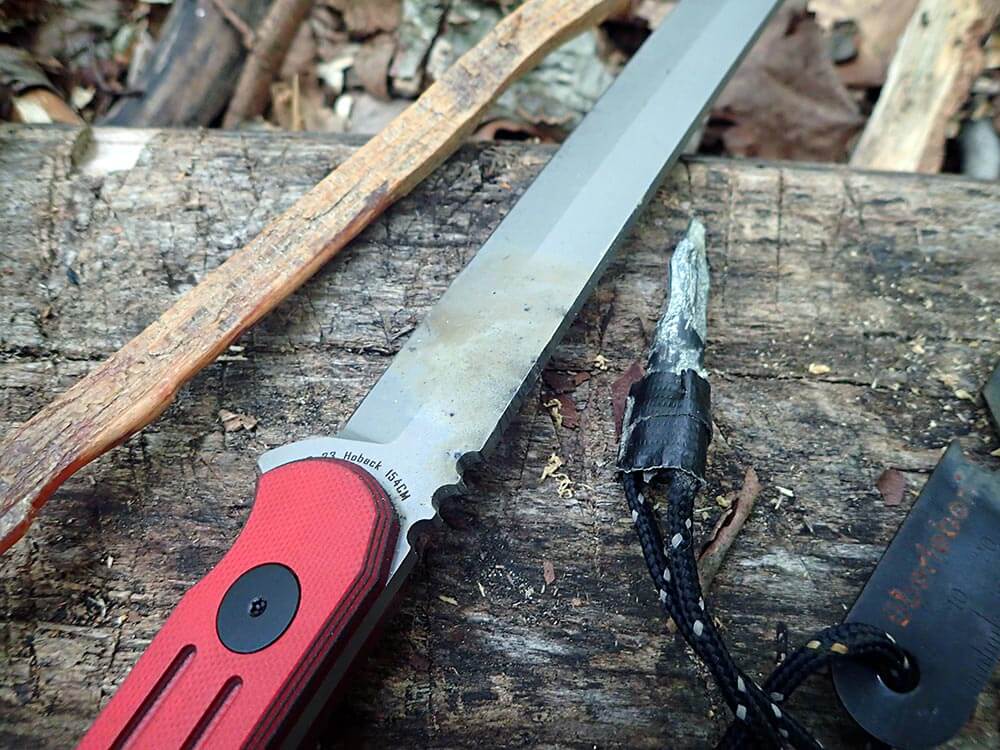
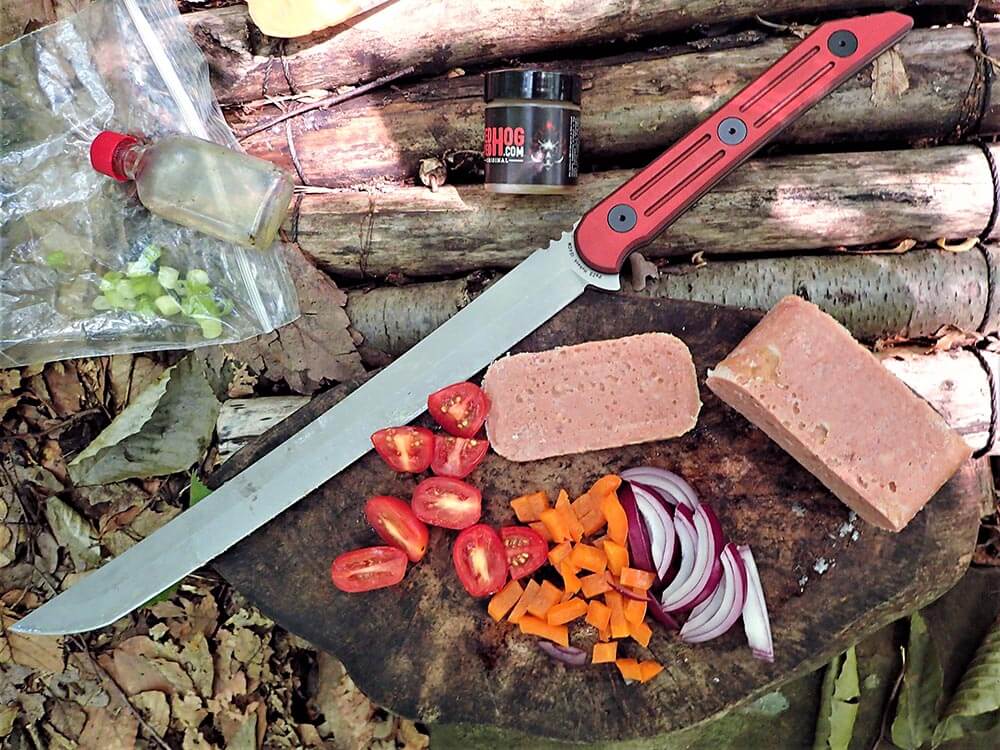
For this reason, I opted to use a small, homemade wood-burning hobo stove from a coffee can. I had a considerable amount of split hardwood chunks, just the perfect size for the stove. I needed finger-long pieces ranging from pencil to finger thickness, preferably from maple. The Kwaichete is the ideal tool for this task, and I utilized its speed to quickly chop a dead maple stick like I was in an assembly line.
Typically, chopping dead sticks turns into an Easter-egg hunt, as all the pieces randomly take flight and project in all directions. To prevent this or cut down on stick hunting, I used a dead-standing beech and chopped the stick parallel to the trunk while reaching around it and hovering over the top. This usually propels the stick straight down to the ground.
I sometimes use a Japanese-made Takibi Deep Frying Pan made by Bush Craft Inc., which looks like a camp wok. It has a socket that a stick can fit into and only needs minimal carving. The Kwaichete was up to the task, as I chopped one of the green maple sticks I had trimmed earlier. Two chops, a chamfered handle side, and a wedge on the other end completed the project with an added eye bolt to secure it in the predrilled hole. Peppers, onions, tomatoes, and luncheon meat were on the menu. The Kwaichete sliced like a kitchen knife with a slightly upswept blade. I can imagine a 6- to 7-inch bladed version being super helpful in the kitchen, especially with 154CM steel.
“The Kwaichete is the ideal tool for this task, and I utilized its speed to quickly chop a dead maple stick like I was in an assembly line.”
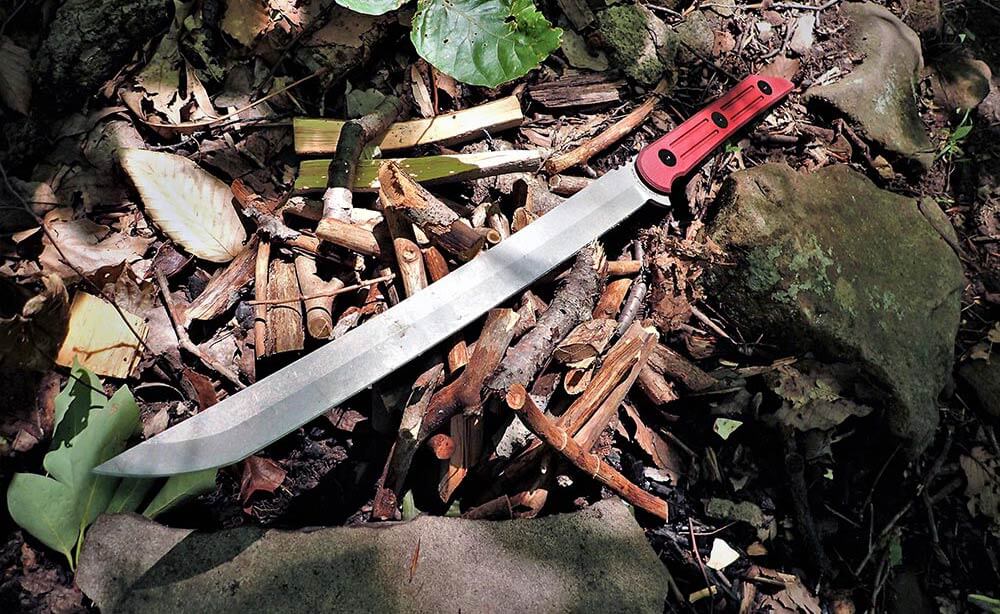
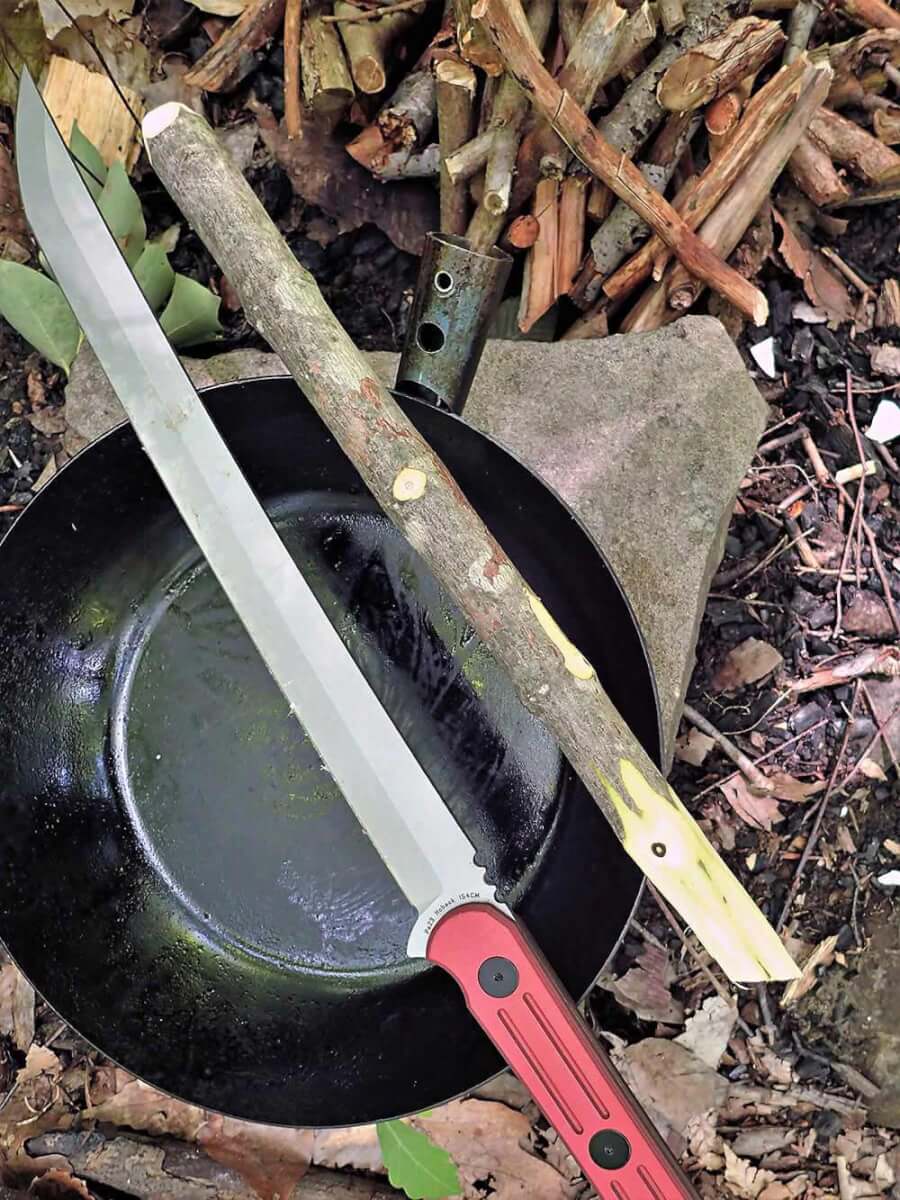
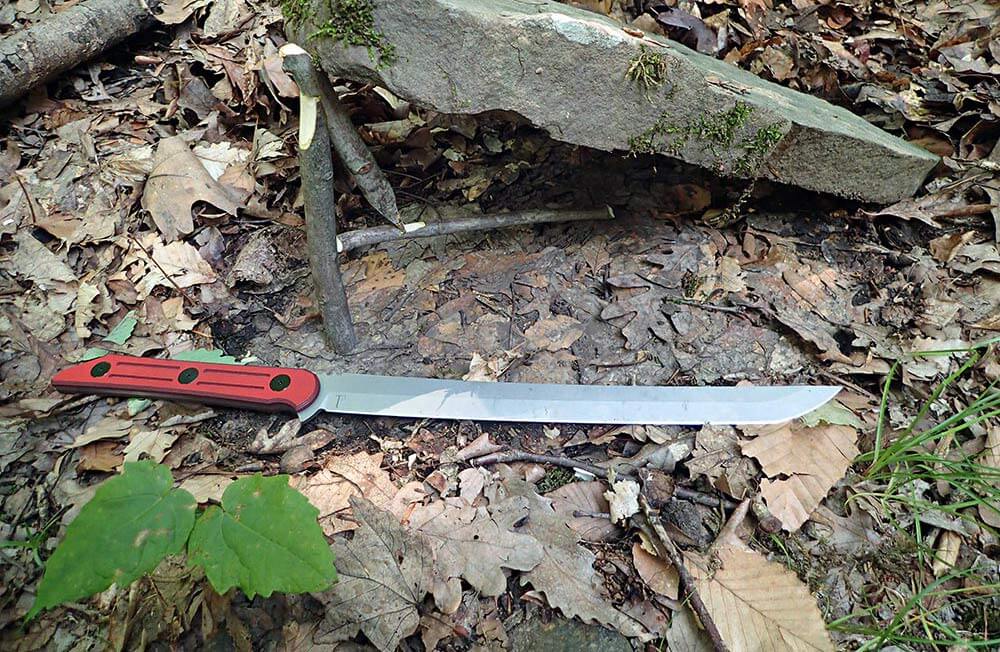
My last task was making a jungle-style trap with the pieces of green maple I had left over. I call it a jungle trap because I have only seen it in videos set in Vietnam. It is simple to make and requires two main pieces: a small trigger stick and a flat stone for the deadfall. The verticle piece has a wedge carved on the top end. The second piece is shorter, with a 7-notch carved on one side at the top and a 45-degree angle cut behind it. The bottom also has a wedge. I used a large, flat stone for the deadfall. It was balanced to rest on the 45-degree cut, and the trigger stick was put into place to set. Green wood can be rough on a blade, and maple is a hardwood. However, the Kwaichete was still hair-shaving sharp after performing its duty.
FINAL CUT
Hoback Knives makes tools, not trophies, and I put that to the test. The Kwaichete is a handy blade to have for day hikes and trailblazing. It can handle machete and knife tasks well, with that added flair and samurai style. Kwaichete is a fitting name; however, I’d call it a Bushcraft Sword Extraordinaire!
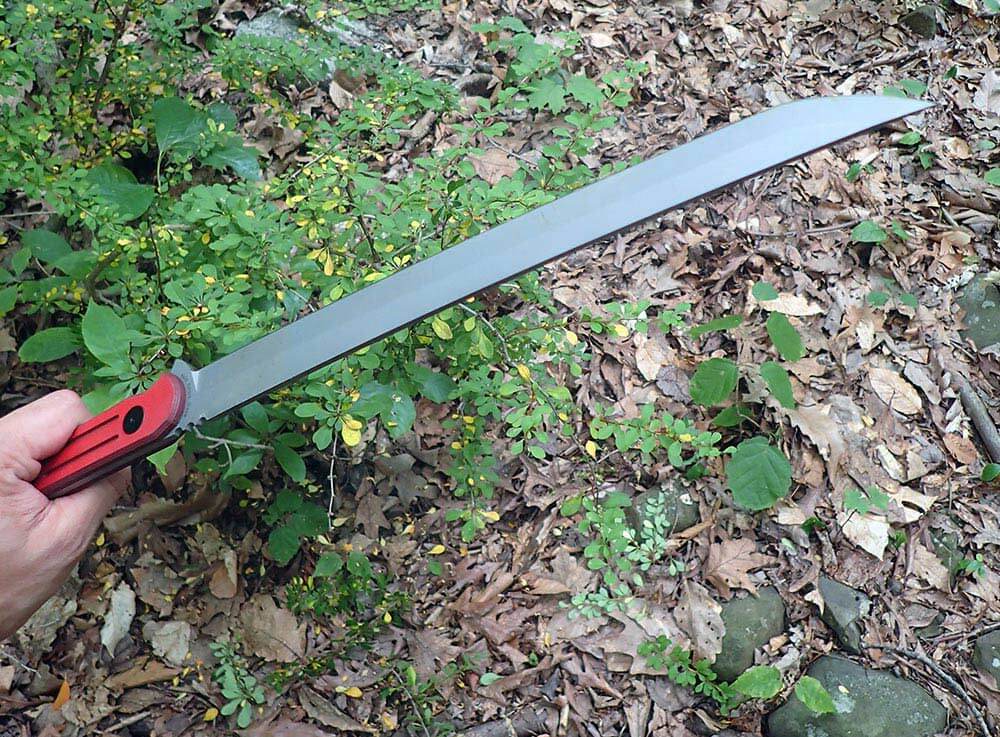
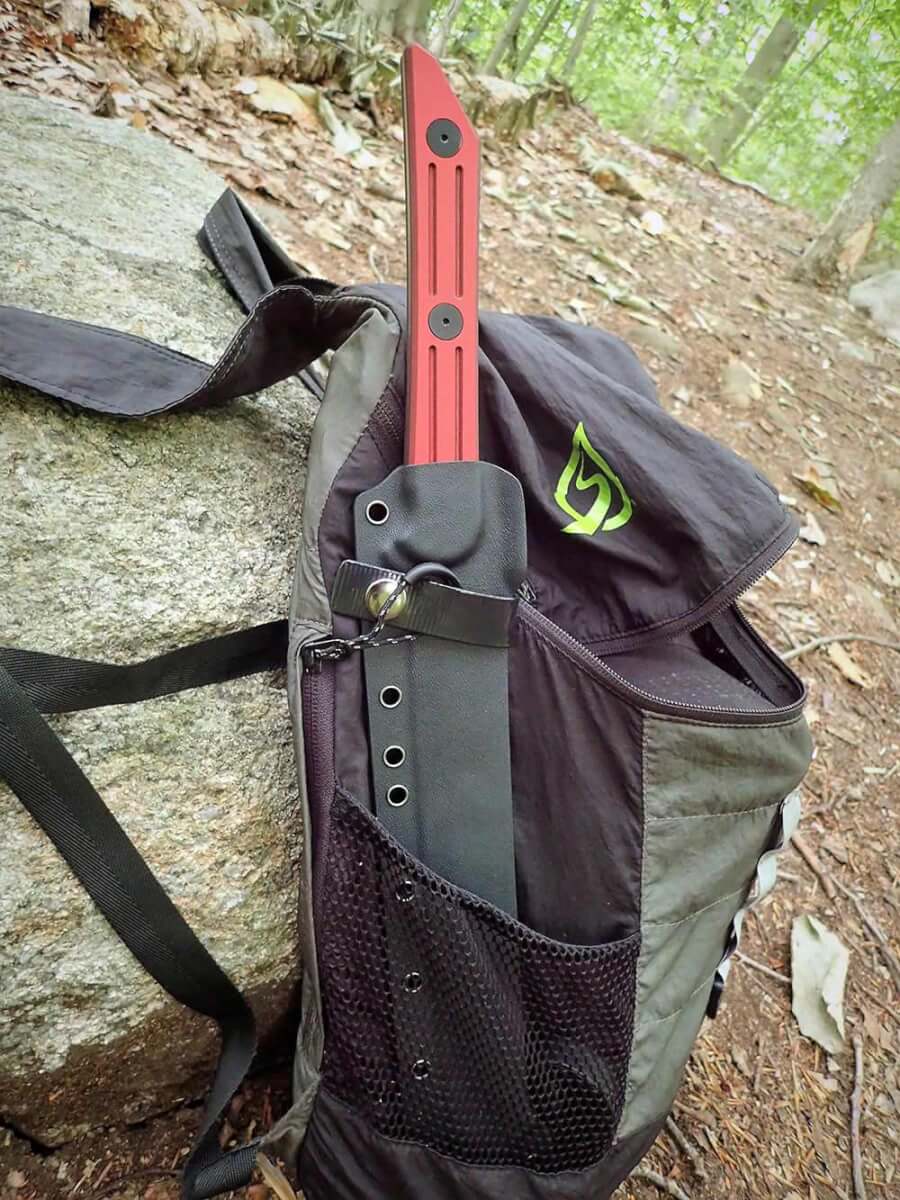
THE SPECS
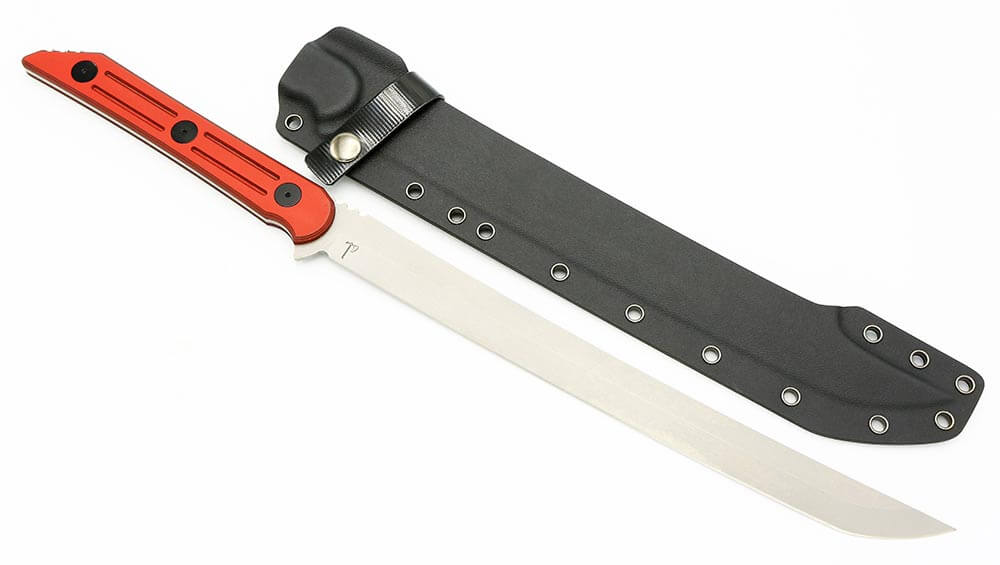
Model:
Jake Hoback Knives Kwaichete
Overall Length:
19 inches
Blade Length:
12 inches
Blade Material:
154CM steel
Thickness:
⅛ inch
Handle:
Ruby Red SureTouch
Weight:
14.9 ounces with sheath
(11 ounces sword only)
SOURCE
Jake Hoback Knives
www.JakeHobackKnives.com
Admin@JakeHobackKnives.com
Instagram: @jakehobackknives


